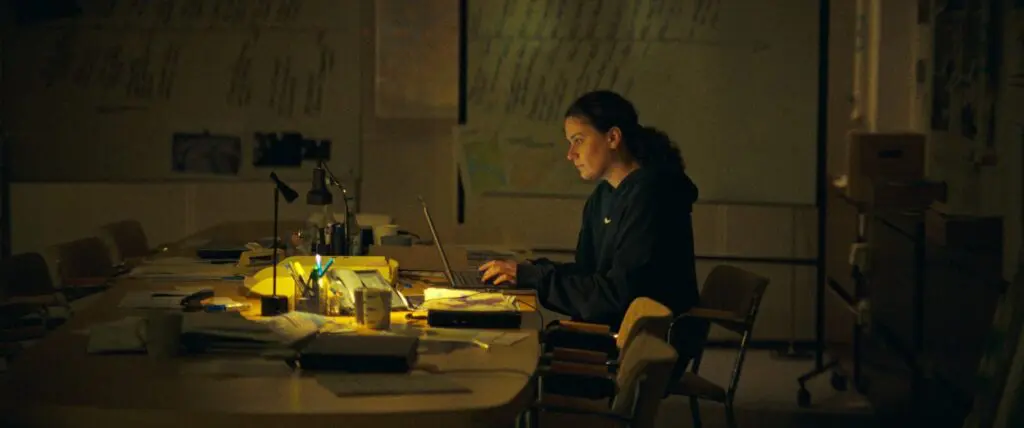A grain of truth is a powerful thing, and there’s a big one behind Netflix’s Swedish limited series The Helicopter Heist. The 2009 robbery of the G4S cash service building in Västberga, southern Stockholm, has become an almost folkloric event for the locals, with the lack of an official record leaving plenty of room for creative embellishment. Netflix’s contribution to the story is to bolt a dramatic narrative onto the facts, weaving a story of friendship and cat-and-mouse suspense among the available details.
A lot of those details are cribbed from the novel of the same name by Jonas Bonnier, on which the series is based. There’s a speculative quality to it all that works to answer some questions about what might have happened and why, but it’s ultimately artistic license to give the story a binge-worthy shape and eventual payoff. The facts behind the case are interesting enough on their own.
Gone In 20 Minutes
It took the perpetrators of the real heist just 20 minutes – a 05:35 liftoff after a 05:15 touchdown – to liberate the G4S of $150 million. And yes, there was a helicopter involved.
The chopper, a Bell 206 stolen from Roslagens helicopter base in Norrtälje, landed on the roof of the cash service and accommodated multiple bags of stolen cash before taking off with the robbers aboard. The snatch and grab was highly efficient; glass was smashed with sledgehammers, security doors were blown open, and buzzsaws tore through locks. Every step was calculated; every obstacle was accounted for.
This included the potential response. Police were deterred by strategically-placed bombs and the threat of small arms fire, grounding their helicopters, and their cars were thwarted by caltrops scattered across the road. It was, by all accounts, a master plan.
The Investigation Begins
However well-planned and executed the heist might have been, enough clues were left behind – the helicopter itself, CCTV footage, DNA evidence – for law enforcement to do their jobs. It took a while, but eventually, ten of the perpetrators were brought to justice.
The titular helicopter was found just three hours after the robbery, abandoned in a forest north of Stockholm. Thanks to a tip-off from the Serbian police, Swedish authorities were forewarned about the potential of a robbery and suspected that one of the organizers was connected to Serbia’s secret police, the BIA Red Berets. His name was Goran Bojovic, and he was eventually found in his apartment with a bag full of money and sentenced to eight years in prison.

The Helicopter Heist Still | Image via Netflix
Safa Kadhum was tracked down after leaving his DNA on the 20-foot ladders used to infiltrate the facility – he also got eight years. So did the pilot, Alexander Eriksson, a Swedish national who was traced to an airport in the Canary Islands.
Despite ten men being a pretty good haul, it’s still suspected that many – perhaps even most – of those connected to the crime were never caught, and most of the money was never recovered.
‘The Helicopter Heist’ Massages The Facts
While The Helicopter Heist is based on the details of this true story and based on testimony from the robbers provided to Jonas Bonnier, the names of the perpetrators have been changed, as have many personal details (and, of course, a lot of stuff is completely made-up.)
The show’s protagonists, Michel (Ardalan Esmaili) and Rami (Mahmut Suvakci), are based on Charbel Charro, a P.E. teacher of Syrian descent born and raised in Sweden, and Safa Kadhum, respectively. The other robbers, including the pilot Axel Broberg and explosives nut Niklas Larsson, are also based on their real-life counterparts, the aforementioned Alexander Eriksson and Mikael Södergran.
The tip-off from the Serbian police and the Swedish authorities’ lackluster response to it is real, by all accounts, and a lot of character details like Eriksson’s drug habit are also factual. But a lot of details are massaged for the sake of a smoother dramatic arc, and, of course, because so much of the case remains steeped in mystery. Even though Bonnier’s book is based on real-life testimony, nobody seems to have any idea how much of it is the real truth.
The police never found the money.




